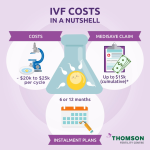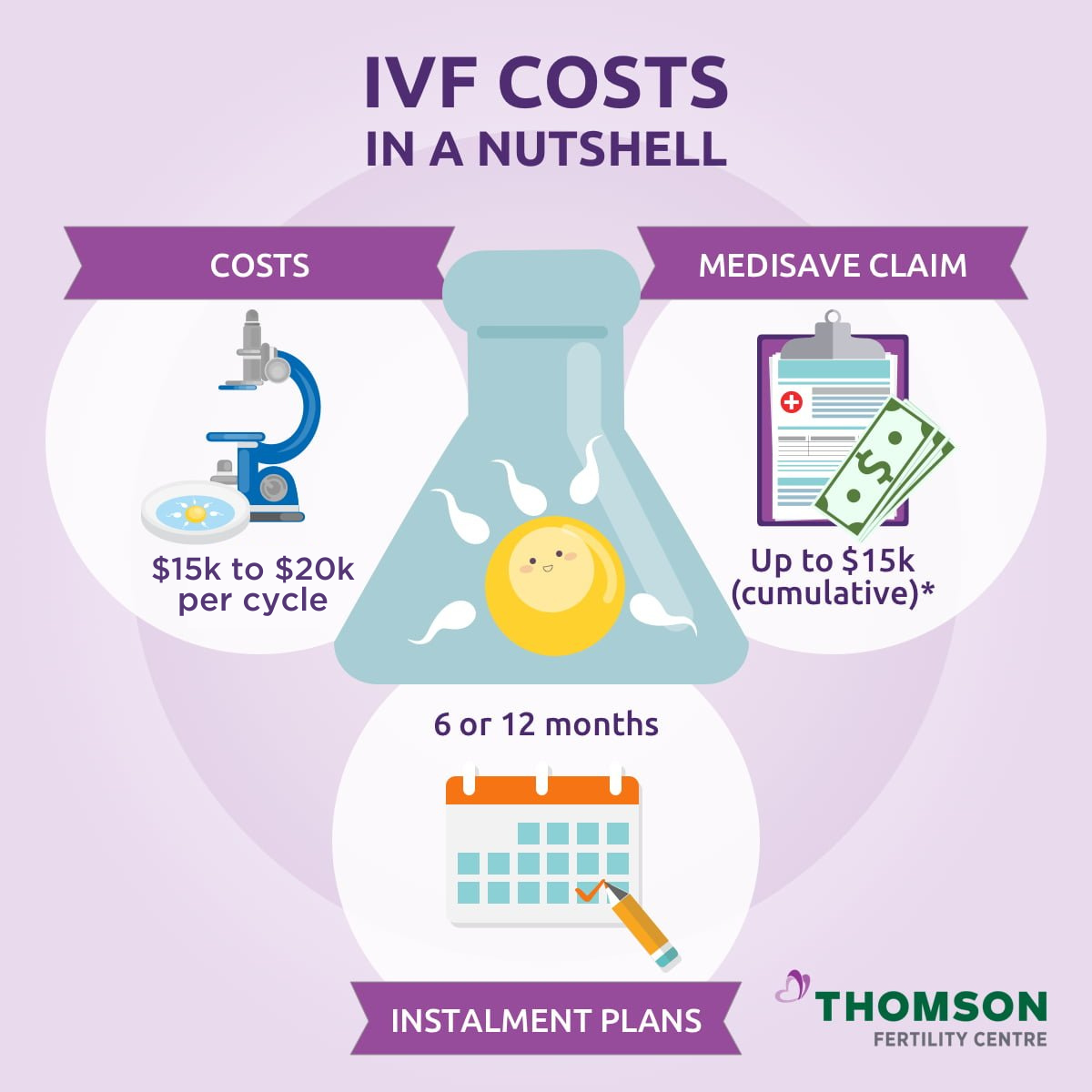
Trump’s Free IVF Promise: What It Means, Why It Matters, and What You Need to Know
April 5, 2025
The Real Cost of IVF: What You Need to Know Before You Start
April 5, 2025The Average Cost of IVF: Everything You Need to Know in 2025
So, you’re thinking about in vitro fertilization (IVF). Maybe you’ve been dreaming of starting a family for years, or perhaps you’re just curious about what it takes to make that dream come true. Either way, one big question probably keeps popping up: How much does IVF actually cost? It’s a topic that’s equal parts exciting and overwhelming, especially when you start digging into the numbers. Spoiler alert: it’s not cheap! But don’t worry—I’m here to break it all down for you in a way that’s easy to understand, packed with juicy details you won’t find everywhere else, and full of practical tips to help you navigate this journey.
IVF isn’t just a medical procedure; it’s a rollercoaster of emotions, hopes, and—yes—money. From hidden costs to surprising ways people save, this guide will spill the tea on everything you need to know about the average cost of IVF in 2025. We’ll cover the basics, dive into some lesser-known secrets, and even share the latest research to give you a fresh perspective. Ready? Let’s get started!
What’s the Average Cost of IVF in 2025?
Let’s cut to the chase: the average cost of a single IVF cycle in the United States in 2025 hovers between $12,000 and $20,000. That’s just for the “basic package”—think egg retrieval, fertilization in a lab, and embryo transfer. But here’s the catch: that number doesn’t include extras like medications, genetic testing, or additional treatments, which can push the total closer to $25,000 or even $30,000 per cycle. And since many people need more than one cycle to get pregnant, the costs can add up fast.
Breaking Down the Basics
So, what exactly are you paying for? Here’s a quick rundown of what that $12,000–$20,000 covers:
- Monitoring Appointments: Ultrasounds and blood tests to track your progress (usually $500–$1,000).
- Egg Retrieval: A minor surgery to collect eggs from your ovaries ($3,000–$5,000).
- Lab Fees: Fertilizing the eggs with sperm and growing embryos ($3,000–$6,000).
- Embryo Transfer: Placing the embryo in your uterus ($1,500–$3,000).
- Anesthesia: Keeping you comfortable during egg retrieval ($500–$1,000).
Sounds straightforward, right? But here’s where it gets tricky: those are just the starting prices. Depending on where you live, the clinic you choose, and your unique needs, the bill can climb higher than a kid’s wish list for Christmas.
Why Costs Vary So Much
Ever wonder why one person pays $15,000 while another forks over $30,000? It’s not random! Here are some big factors that shake up the price tag:
- Location: Big cities like San Francisco or New York often charge more—think $24,000+—because of higher rent and staff salaries. Smaller towns might be closer to $12,000.
- Clinic Reputation: Fancy clinics with high success rates (and maybe a celebrity endorsement or two) can charge a premium.
- Your Age and Health: Older patients or those with tricky fertility issues might need extra steps, like more meds or special tests.
- Add-Ons: Things like genetic screening or freezing embryos aren’t included in the base price.
Fun fact: some clinics in states like Illinois or New Jersey have to follow insurance mandates, which can lower out-of-pocket costs if you’re covered. Meanwhile, in states with no mandates, you’re on your own.
The Real Number Nobody Talks About
Here’s a little secret: the total cost of IVF isn’t just one cycle. Studies show the average person goes through 2–3 cycles before success—or before deciding to stop. That means you’re looking at $24,000–$60,000 total for many families. A 2023 study from the Journal of Reproductive Medicine found that couples spent an average of $33,000 out-of-pocket over 18 months. And that was before 2025’s inflation bump!
Hidden Costs That Sneak Up on You
Okay, so you’ve got the basics down. But IVF is like planning a big party—there are always extra expenses you didn’t see coming. Let’s shine a light on some of these sneaky costs that can catch you off guard.
Medications: The Pricey Little Pills
Fertility drugs are a huge chunk of the bill, and they’re not included in that $12,000–$20,000 base price. These meds stimulate your ovaries to produce more eggs, and they can cost anywhere from $3,000 to $6,000 per cycle. Why the range? It depends on:
- Your Body: Some people need higher doses or longer treatment.
- Brand vs. Generic: Name-brand drugs can be pricier than generics.
- Pharmacy: Big chains might charge more than specialty fertility pharmacies.
Here’s a tip from the trenches: some patients save hundreds by shopping around or asking their doctor about “mini-IVF,” which uses fewer meds (more on that later!).
Genetic Testing: Worth It or Waste?
Ever heard of Preimplantation Genetic Testing (PGT)? It’s when doctors screen embryos for genetic issues before transferring them. It’s a game-changer for some, but it’ll set you back $3,000–$5,000 per cycle, plus lab fees. A 2024 study from Fertility and Sterility Reports found PGT can boost success rates by 10–15% for women over 35—but it’s not a must for everyone.
✔️ Pro: Fewer miscarriages and healthier pregnancies.
❌ Con: Extra cost and not always covered by insurance.
Freezing Embryos: A Backup Plan with a Price
Got extra embryos? Freezing them for later costs $1,000–$2,000 upfront, plus $300–$600 a year for storage. It’s like renting a tiny fridge for your future babies! Lots of couples do this to save time and money on future cycles, but it’s one more expense to budget for.
Donor Eggs or Sperm: When Plan A Needs Help
If your eggs or sperm aren’t up to the task, donor materials can jump the price to $35,000–$60,000 per cycle. Donor eggs are especially pricey because donors get paid for their time and effort—sometimes $5,000–$10,000 per donation. It’s a big decision, and the emotional cost can feel just as heavy as the financial one.

Real Stories: What People Actually Pay
Numbers are great, but what’s it really like to pay for IVF? Let’s peek into the lives of a few folks who’ve been there.
Sarah’s $45,000 Journey
Sarah, a 34-year-old teacher from Chicago, thought one cycle would do the trick. “I budgeted $15,000,” she says. “But after two failed cycles and extra tests, I spent $45,000 total.” Her big surprise? Insurance covered some monitoring but nothing else. She ended up dipping into her savings—and selling her old guitar collection on eBay!
Mike and Jen’s $28,000 Win
Mike and Jen, a couple from Texas, got lucky on their first try—but it still cost $28,000. Why so much? They opted for PGT and froze three embryos. “We wanted to stack the odds in our favor,” Jen explains. They used a 0% interest credit card to spread out payments, which made it feel less overwhelming.
A Secret Hack from Lisa
Lisa, a 39-year-old from California, shared a trick most articles skip: she traveled to Mexico for IVF. “It was $7,500 per cycle instead of $20,000 here,” she says. With flights and hotels, she still saved over $10,000—and welcomed twins in 2024!
How to Make IVF More Affordable
Now that you’ve seen the costs, let’s talk about how to keep your wallet from crying. There are more options than you might think!
Insurance: Does It Even Help?
Only 19 states in the U.S. require some form of fertility coverage in 2025, and even then, it’s spotty. For example, New York covers up to three cycles, but only for certain plans. Most people still pay a lot out-of-pocket. Here’s what to do:
- Call Your Insurance: Ask exactly what’s covered—monitoring? Meds? The procedure?
- Check Your Employer: Some big companies (like Starbucks or Google) offer IVF benefits.
- Look at HSA/FSA: Health Savings Accounts or Flexible Spending Accounts can save you pre-tax dollars.
Dr. Maria Polyakova, a health policy expert at Stanford, once said, “Insurance coverage for IVF can shift who gets to have kids—it’s a game-changer for lower-income families.” She’s right—when it works.
Financing and Discounts: Creative Cash Flow
No insurance? No problem! Clinics and lenders have stepped up:
- Payment Plans: Many clinics let you pay in chunks—sometimes interest-free.
- IVF Loans: Companies like Prosper or CapexMD offer loans with rates as low as 6%.
- Bulk Discounts: Some places offer “multi-cycle packages” (e.g., $25,000 for three tries) to save you money upfront.
One couple I read about haggled a 10% discount just by paying cash upfront—worth a try!
Mini-IVF: Less Meds, Lower Cost
Mini-IVF uses lighter doses of drugs, cutting med costs to $500–$1,500 per cycle. The total? Around $5,000–$10,000. A 2020 study in Reproductive Biomedicine Online found success rates are slightly lower (20–30% vs. 40% for traditional IVF), but it’s a budget-friendly option for younger patients or those with good egg reserves.
✔️ Good For: Healthy women under 35.
❌ Not Great For: Older patients needing lots of eggs.
Travel for Treatment: The IVF Vacation
Here’s a wild idea: go abroad! Countries like Mexico ($5,000–$10,000 per cycle), Spain ($6,000–$8,000), or even Canada (free in some provinces starting 2025, like British Columbia) offer cheaper IVF. Add in a little sightseeing, and it’s a win-win—just research clinics carefully.
The Emotional Cost Nobody Mentions
Money isn’t the only thing you’ll spend on IVF. The emotional toll can be just as big, and it’s something lots of articles gloss over.
Stress and Sticker Shock
Imagine shelling out $20,000, only to get a negative pregnancy test. “It felt like I’d lost a bet and a baby all at once,” Sarah told me. Studies back this up—a 2023 report from Frontiers in Global Women’s Health found 60% of IVF patients experience anxiety over costs.
The Waiting Game
Every step—waiting for eggs to grow, embryos to develop, or that two-week pregnancy test—can feel like forever. And each delay might mean more money if you need another cycle. Dr. Courtney Marsh, a fertility expert at the University of Kansas, puts it perfectly: “IVF tests your patience as much as your bank account.”
Celebrating the Wins
But here’s the flip side: when it works, the joy is unreal. Jen said, “Holding our son made every penny worth it.” That’s the part that keeps people going—and why digging into costs now can save your sanity later.
What’s New in IVF Costs for 2025?
Things are changing fast, and 2025 brings some fresh twists to the IVF world. Let’s look at the latest trends and research shaking up the price game.
Government Funding: A Glimmer of Hope
Big news! British Columbia, Canada, just rolled out free IVF for one cycle starting April 2025—costing the government $34 million a year. Could the U.S. follow? Some states are talking about it, but don’t hold your breath. For now, it’s a cool idea to watch.
Tech Breakthroughs: Cheaper and Smarter?
New tools like INVOcell—a device that cuts lab costs by letting embryos grow in your body—can drop prices to $5,000–$7,000 per cycle. Success rates are lower (around 20%), but a 2024 trial in the Journal of Assisted Reproduction Genetics called it “a budget-friendly future.” Keep an eye on this one!
Rising Costs: Inflation Hits IVF
Bad news: inflation’s pushing prices up. Meds that cost $3,000 in 2023 might hit $3,500–$4,000 in 2025. Clinics are feeling it too—expect a 5–10% bump in base fees. Planning ahead is more important than ever.
Your IVF Cost Checklist: Plan Like a Pro
Ready to take control? Here’s a step-by-step guide to figure out your IVF budget and make smart moves.
Step 1: Get a Quote
Call 2–3 clinics near you (or abroad!) and ask for a detailed breakdown. Make sure it includes:
- Base fee
- Meds estimate
- Add-ons like PGT or freezing
- Cancellation fees (if a cycle flops)
Step 2: Check Your Coverage
Dig out your insurance policy and look for terms like “infertility treatment” or “ART” (assisted reproductive technology). Call your provider and ask:
- What’s covered?
- Any lifetime max (e.g., $10,000)?
- Pre-approval needed?
Step 3: Crunch the Numbers
Here’s a handy table to map it out:
| Expense | Low-End Cost | High-End Cost | Your Estimate |
|---|---|---|---|
| Base IVF Cycle | $12,000 | $20,000 | |
| Medications | $3,000 | $6,000 | |
| Genetic Testing | $3,000 | $5,000 | |
| Embryo Freezing | $1,000 | $2,000 | |
| Storage (1 year) | $300 | $600 | |
| Total | $19,300 | $33,600 |
Fill in your numbers as you go!
Step 4: Explore Savings
Try these hacks:
- Negotiate: Ask clinics for discounts—especially if you pay upfront.
- Grants: Groups like Baby Quest offer $2,000–$15,000 to qualifying families.
- Crowdfunding: Sites like GoFundMe have helped tons of couples raise cash.
FAQs: Your Burning Questions Answered
Got questions? I’ve got answers! Here are the ones people ask most—plus a few you might not have thought of.
Does IVF Guarantee a Baby?
Nope! Success rates hover around 40% per cycle for women under 35, dropping as you age. It’s a gamble, but one lots of people win.
Why Is IVF So Expensive?
It’s high-tech stuff! You’re paying for skilled doctors, fancy labs, and custom meds. Plus, clinics have to cover their costs—rent, staff, equipment—it’s a big operation.
Can I Do IVF on a Budget?
Yes! Mini-IVF, traveling abroad, or finding a clinic with a refund program (like “pay $25,000, get money back if it fails”) can slash costs.
What If I Can’t Afford It?
You’ve got options: adoption ($20,000–$40,000), fostering (often free), or even hitting pause to save up. It’s okay to take a breather.
The Bottom Line: Is IVF Worth It?
So, is the average cost of IVF—$12,000–$30,000 per cycle, maybe $60,000 total—worth it? That’s a question only you can answer. For some, it’s a no-brainer: a chance at a family outweighs any price tag. For others, the financial and emotional load feels too heavy. Dr. Laura Spencer, a fertility coach, sums it up well: “IVF is an investment in hope—but it’s not the only path to parenthood.”
The key? Arm yourself with info. Know the costs, the hacks, and the emotional ride ahead. Whether you’re ready to jump in or just dipping your toes, you’re not alone on this journey.
Let’s Chat: What’s Your IVF Story?
Now it’s your turn! Have you done IVF? Are you saving up for it? Maybe you’ve got a killer tip I missed. Drop a comment below—I’d love to hear your story or answer your questions. Let’s keep this conversation going—because nobody should feel lost in the IVF maze!
